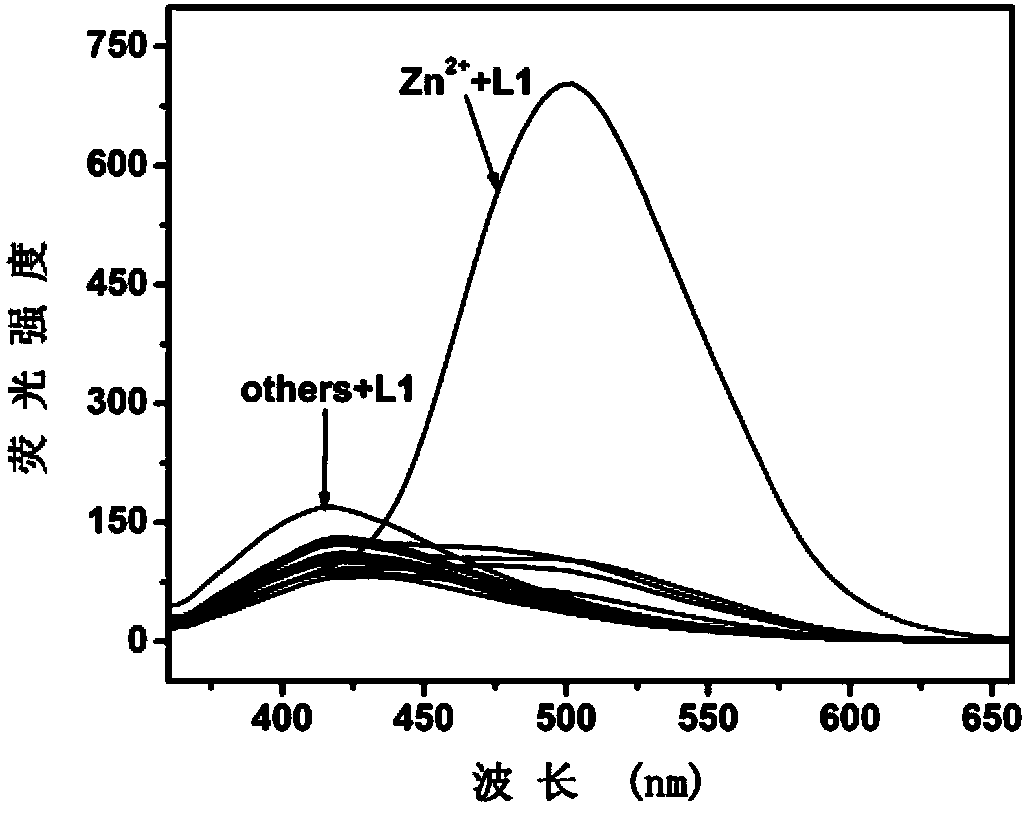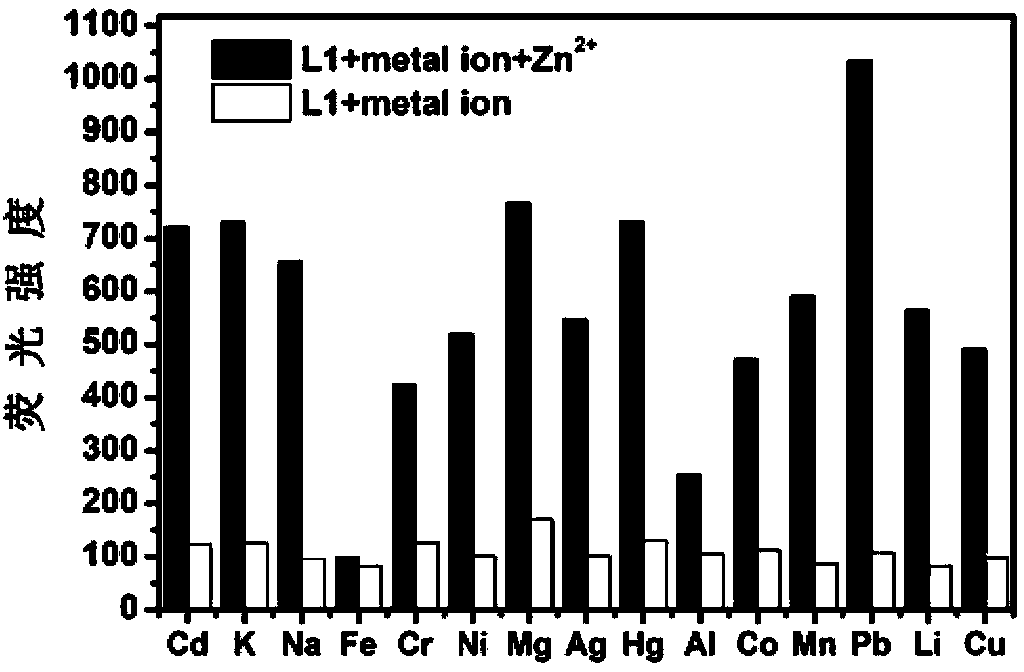Fluorescence molecular probe for detecting zinc ions and preparation method thereof
A fluorescent molecular probe, zinc ion technology, used in fluorescence/phosphorescence, chemical instruments and methods, biological testing, etc., can solve the problem of weak ability to penetrate cell membranes, limited application of aqueous media, and difficult to quickly and efficiently determine the concentration of zinc ions And other issues
- Summary
- Abstract
- Description
- Claims
- Application Information
AI Technical Summary
Problems solved by technology
Method used
Image
Examples
Embodiment 1
[0028] The synthetic route of the fluorescent molecular probe is as follows:
[0029] .
[0030] The specific process is:
[0031] Add 8-aminoquinoline (0.69g, 4.8mmol), pyridine (1ml, 12.4mmol), and chloroform (7ml) into a round-bottomed flask, stir in an ice bath and slowly add a mixed solution of chloroacetyl chloride and chloroform dropwise (Chloroacetyl chloride 0.8ml (10.6mmol), chloroform 5ml), after stirring for about 1 hour, return to room temperature, continue to stir for 24 hours until the end of the reaction, spin the solvent, use dichloromethane as eluent, pass the product through a silica gel column Separation and purification by chromatography, spin-drying dichloromethane to obtain light yellow intermediate product L2 (yield 90%).
[0032] Add the intermediate product L2 (1.1g, 5mmol), KOH (0.336g, 6mmol), KI (42mg, 0.25mmol), acetonitrile / water (40ml:8ml, v / v) into the round bottom flask, at 60~80℃ Stir and reflux for 8 h, spin dry the solvent after coolin...
Embodiment 2
[0038] Dissolve the fluorescent molecular probe L1 in water-ethanol solution (8:2, v / v, pH 7.2) to prepare a solution with a concentration of 10 μM, then add zinc ions, and detect the concentration of zinc ions at different concentrations of zinc ions at an excitation wavelength of 360nm. Fluorescence intensity (fluorescence spectrophotometer, model: Hitachi F-4500). Such as figure 1 As shown, as the concentration of zinc ions increases, the fluorescence increases gradually at a wavelength of 500nm.
Embodiment 3
[0040] According to the molar ratio of probe L1 and metal ion as 1:5, probe L1 was added to the water-ethanol solution of metal ions (8:2, v / v, pH 7.2), as figure 2 As shown, the probe L1 exhibits a very strong fluorescence intensity at 500nm after complexing with zinc ions, while the fluorescence intensity of other metal ions is very weak and the fluorescence peak is mainly between 400-450nm. Show very strong selectivity (using other metal ions with the same concentration as a control: cadmium ions, potassium ions, sodium ions, iron ions, chromium ions, nickel ions, magnesium ions, silver ions, mercury ions, aluminum ions, cobalt ions , manganese ions, lead ions, lithium ions, copper ions, etc.).
PUM
 Login to View More
Login to View More Abstract
Description
Claims
Application Information
 Login to View More
Login to View More - R&D
- Intellectual Property
- Life Sciences
- Materials
- Tech Scout
- Unparalleled Data Quality
- Higher Quality Content
- 60% Fewer Hallucinations
Browse by: Latest US Patents, China's latest patents, Technical Efficacy Thesaurus, Application Domain, Technology Topic, Popular Technical Reports.
© 2025 PatSnap. All rights reserved.Legal|Privacy policy|Modern Slavery Act Transparency Statement|Sitemap|About US| Contact US: help@patsnap.com



